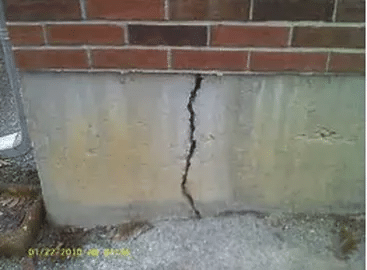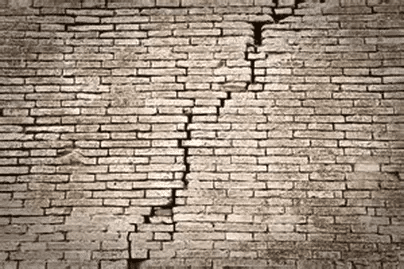About 40 to 50 years ago, Houston home builders began switching from convention concrete & rebar foundations to post-tension slab foundations. This change was not made because post-tension slabs make for a better foundation. This change was made because post-tension slabs are cheaper which translates to more profit for the homebuilder.
Unfortunately, the results of this change is devastating for homeowners. Conventional concrete & rebar foundations last about 20-30 years before failure begins to occur. Post-tension slabs are lasting about 15-20 years and are failing at a much higher rate.
The switch from steel rebar to post-tension cable by Houston area home builders has delivered unmistakable results – post-tension cable foundations are failing earlier and in far greater numbers than steel rebar foundations. Authority News Network, June 22, 2017
Post-tension slabs are created with concrete trenches around the perimeter of the house where the external walls will be placed. Additional trenches, called footings, are dug between the perimeters and spaced about 3 ft apart. Concrete is poured into the trenches and then topped off with a slab of concrete.
The top slab of concrete is thinner than with concrete & rebar.
The theory behind post-tension slabs is that the tension of the cables can meet 50 psi required to compress the entire slab, including the middle, sufficiently enough to prevent failure. The problem with that theory is that the footings anchor the foundation in place. Then tension required to bind the additional concrete in the footings plus the dirt between the footings cannot be reached. The result is that the cable tension is not compressed enough to resist bending movements.
Failure of post-tension slabs can caused by three factors:
- Non-uniform weight distribution of the house causes uneven loads on the foundation. Some of the foundation will experience heavier loads than others causing that are to exert more pressure on the soil beneath the foundation.
- Non-uniform thickness of the soil underneath the foundation results in differences in the support provided to the foundation from underneath the foundation.
- Droughts can be devastating to a foundation. The 2011 and 2013 droughts resulted in many foundations failing at the 5 & 6 year point.
Cost of repair for a small foundation can be as low as $5,000. Cost of repair for a 2-story, 3500 square foot house can be over $60,000.
If you are considering building a new home, insist on concrete & rebar, monolithic slab.
If you currently own a home that has not failed and uses a post-tension slab, monitor your house yearly for signs of settlement (stair-step cracks in brick, horizontal or angle cracks above interior doors).
Source:





